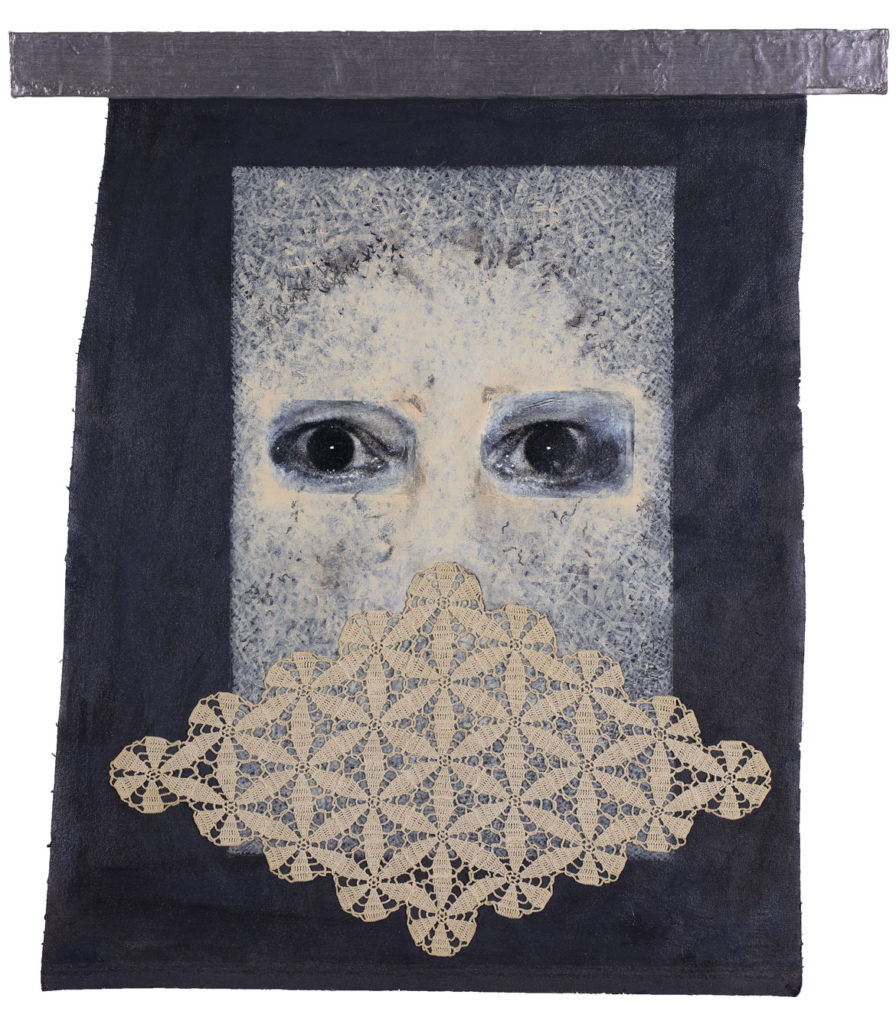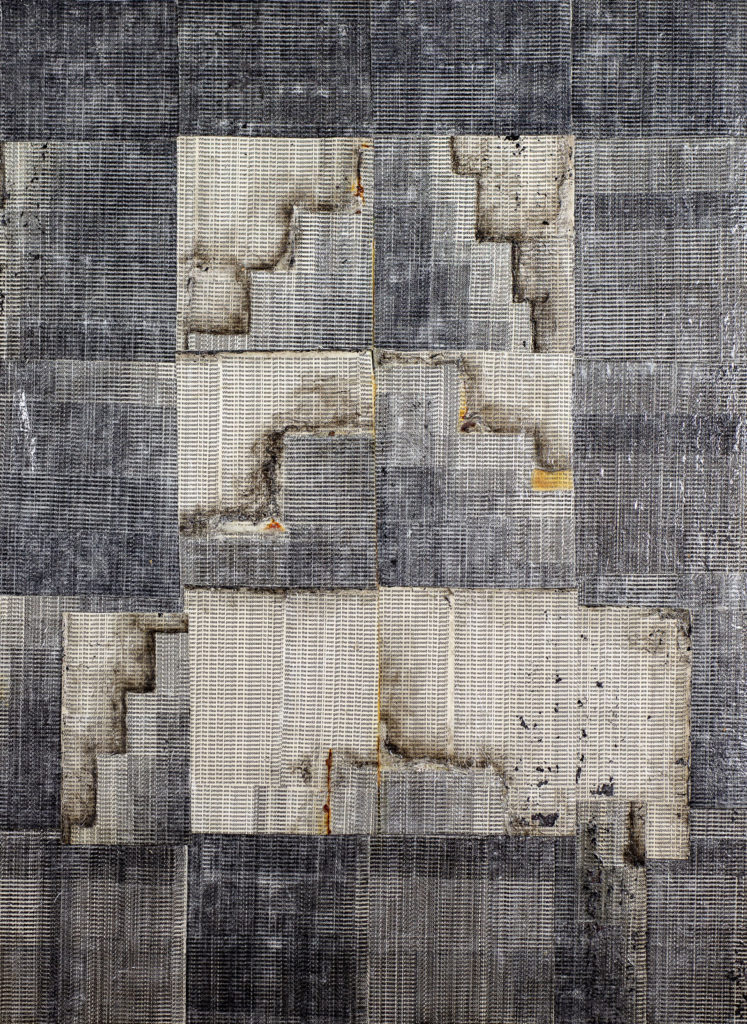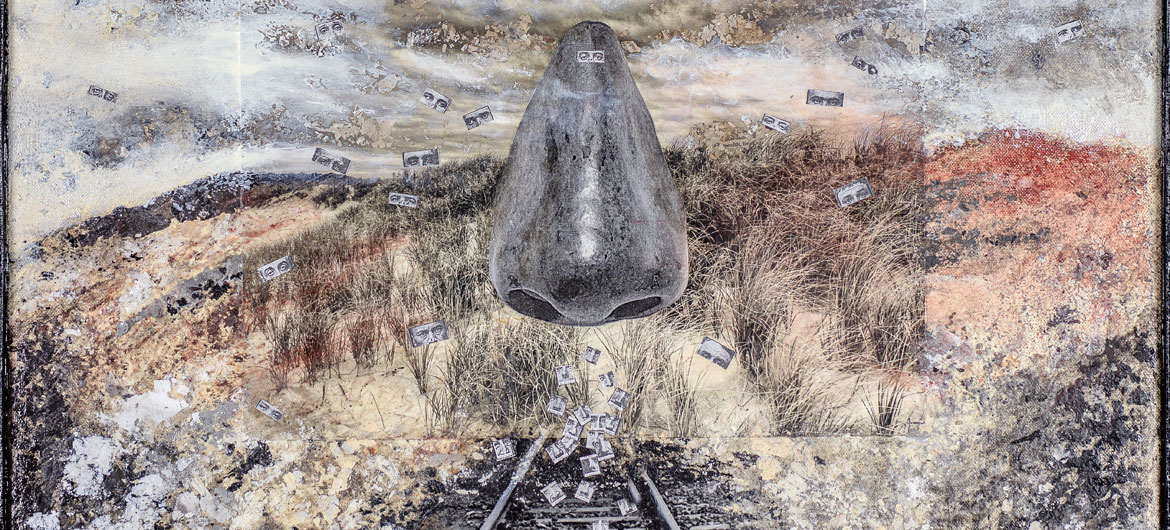“Where in the world did I ever get the idea that people are supposed to be good?” The line is obsessively printed hundreds of times in one of the artworks in Gloucester artist Susan Erony’s exhibition “Lost in America” at Trident Gallery in Gloucester from Oct. 27 to Nov. 25.
For decades, Erony (a friend of mine) has created poetic and haunted works that address eugenics, lost homes, safe places, tanks, Towers of Babel, the Holocaust, the writings of Franz Kafka and Charles Olson, people “disappeared” by the right wing military dictatorship that began ruling Chile in the 1970s. She’s sought to understand evil in our societies. Her art sits in a mournful place where her hope that art might bring enlightenment that could help heal the world is challenged by all those grim realities: Where did I get the idea that people are supposed to be good?
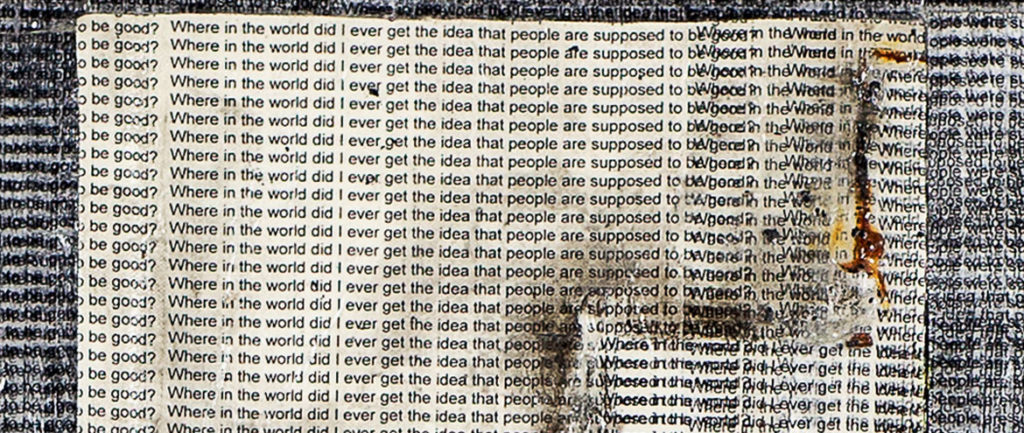
In this new exhibition, Erony speaks of refugees, of environmental destruction, of scorched World War I battlefields, of the rubble left after wars. The title piece, “Lost in America” 2018, composed of acrylic, pencil and burnt paper, might call to mind a river delta seen from space. For Erony, it’s an image of war. “I kept drawing these paths through these battlefields and they kept winding up as dead ends,” Erony tells me. “I cannot believe what’s going on in America and how bad it is. That’s what the work is about. It’s just one issue after another.”
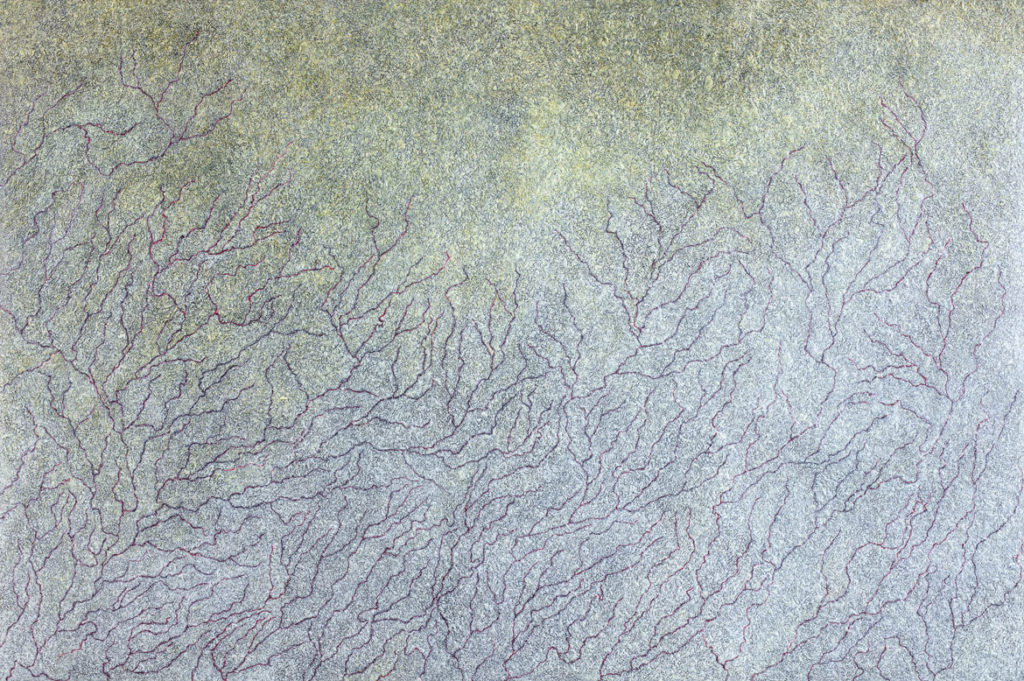
Erony favors palettes of charred blacks and led grays, parched tans and rusty browns in her paintings and collages of photos, textiles, old book pages and her signature medium of burnt paper. She says she began adding encrustations of ashes to her art in 1996, inspired by their “alchemical” feeling—but they also call to mind scorched earth campaigns, ruins, cinders, the ovens of the Nazi death camps.
Her painting “My Father Was a Refugee” is a symbolic portrait of her father behind a barricade. It’s intended to evoke her own family history as well as the demonization of immigrants and refugees in the United States today.
Erony grew up in Brookline. In addition to being an artist, Erony has been a teacher, curator, psychotherapist, activist and, lately, a volunteer aiding refugee families from Afghanistan and Syria—with school, landlords, learning English.
Her mother’s parents and her father were Jewish refugees from murderous pogroms in the Ukraine. “Although I grew up in a Jewish family, with a Russian father who lost four siblings in pogroms, was arrested twice and barely made it out of the country, the history of the Jews was not discussed in my home,” Erony said in 1998.

“My father was a very traumatized man,” Erony tells me. “All he wanted was to be safe.” Her immigrant relatives “all loved the United States, the country that had saved their lives, and never thought of its flaws because they paled in comparison with those they had experienced before,” she writes on her website.
“They’re all rolling in their graves. That’s all I can say. That’s all I can think,” Erony now says. “When the kids were being put into detention and separated from their parents at the border [last summer] … I had this line going in my head: My father is rolling in his grave.”
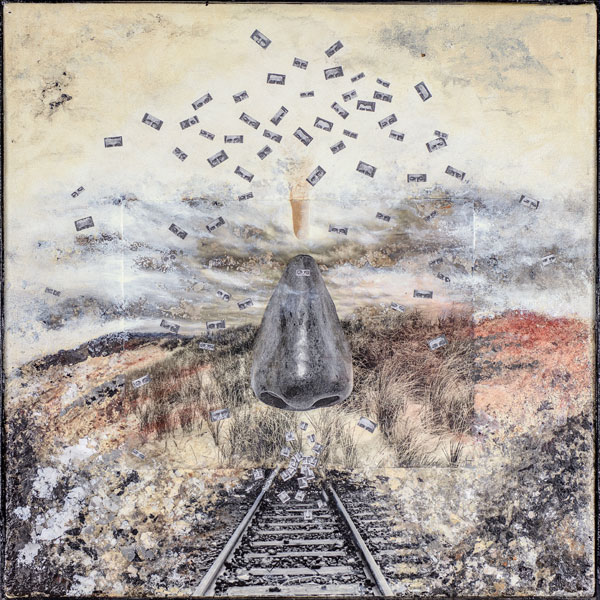
“False God” uses paint, photographs, burnt paper and Conte crayon to depict a silvery nose hovering over train tracks that dead end in hillocks of dry grass. It was inspired by the false nose that the 16th century Danish astronomer Tycho Brahe wore after his nose was lopped off in a duel, and Brahe’s struggles to understand the universe. Erony describes it as “a fake nose on a man searching for the truth.” It’s about, “What is truth and what we do as humans with truth as we see it. … That morphed into an idea about false gods and the way Trump’s following is like a cult. We have always looked for gods to save us and it hasn’t worked.”
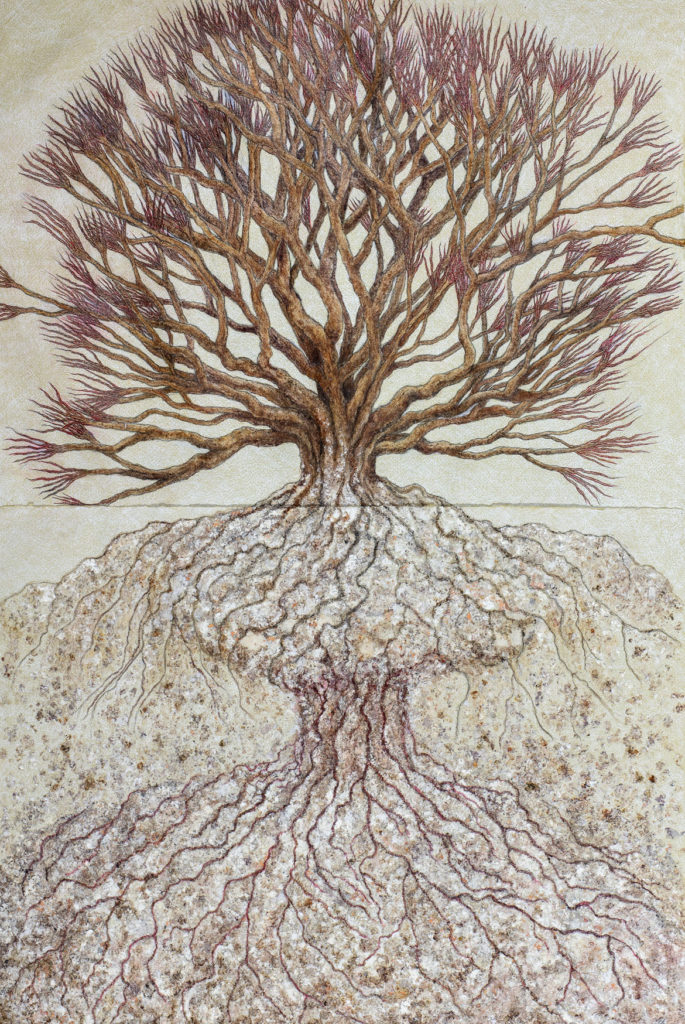
“Growth” employs pencil, paint and burnt paper to depict a spiky tree and, underground, a mushroom cloud of roots. “Things are changing so much because of climate change and what it’s going to mean for the things we see,” Erony says. “…There’s going to be some kind of evolution. I’m so intrigued about what that might be.”
Erony continues, “When I look at that tree I see all kinds of evil that is leading to these new changes, these new growths, these new evolutions that are being so sped up by us.”

Her oil painting “Rubble” shows heaps of bricks. “I thought it was time for the Towers [of Babel] to start crumbling. Really at this point they’re ruins,” Erony says. “I ended up building this city of piles of bricks and a wall. It’s so easy to think apocalyptically now. This piece is really about aftermath.”
She recalls histories she’s heard of German women recycling bricks from shattered buildings at the end of World War II. “They would clean the bricks and not talk. All you would hear is the bricks going down the line, whoosh, whoosh, whoosh.”
“The end of the world is in here. The amount of destruction we’ve caused,” Erony says. “…Is this what it’s going to look like in our country if we keep going the way we’re going?”
“But there’s a comforting thought, just the nature, she just reclaims everything, she does what she does,” Erony says. “… I’m grabbing at straws. What can I tell you. There’s new grass there. … I want part of my art to be about new growth that can happen.”
Help Wonderland keep producing our great coverage of local arts, cultures and activisms (and our great festivals) by contributing to Wonderland on Patreon. And sign up for our free, weekly newsletter so that you don’t miss any of our reporting.
